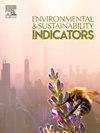Fisheries performance indicators for assessing the ecological sustainability of wild-caught seafood products in Europe
IF 5.4
Q1 ENVIRONMENTAL SCIENCES
引用次数: 0
Abstract
The increasing global demand for seafood has intensified pressure on marine resources and hence the need to adopt sustainable fishing practices and promote sustainable products. Raising consumer awareness about the variability in ecological sustainability of seafood is an important tool to facilitate prevention of marine resource overexploitation, minimise the impact of fishing on ecosystems, and ensure long-term renewal of aquatic resources. Here we propose a simple but comprehensive and generic assessment framework with three indicators that inform on the impact of fishing practices on seabed habitats, fish stock status, and bycatch risk of sensitive species for any given product, whether domestically caught or imported, based on publicly available information. A rating scale from 1 to 5 is used for clarity and effectiveness in communicating the respective risks. The indicators provide a user-friendly tool for consumers, policymakers, and industry professionals to make informed decisions about seafood sustainability. Our results show contrasted ecological risks among the main fishing methods, which is crucial for value chain actors for making informed choices that support sustainable fishing practices. Our method enables scientifically proven practices for mitigating by-catches of sensitive species to be accounted for. A clear, transparent, fair and adaptable scoring system can enhance societal awareness and steer the market towards more sustainable seafood products.
求助全文
约1分钟内获得全文
求助全文
来源期刊

Environmental and Sustainability Indicators
Environmental Science-Environmental Science (miscellaneous)
CiteScore
7.80
自引率
2.30%
发文量
49
审稿时长
57 days
 求助内容:
求助内容: 应助结果提醒方式:
应助结果提醒方式:


